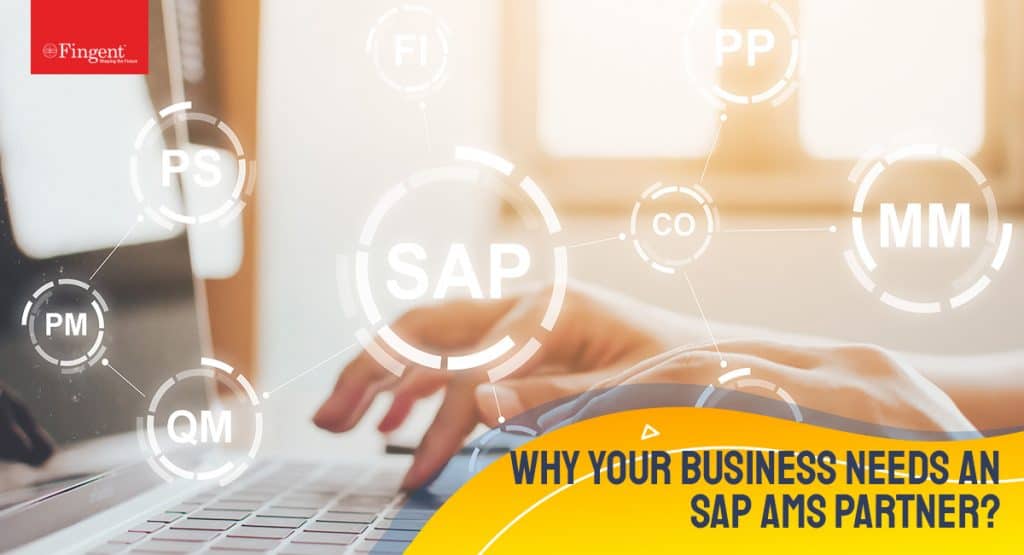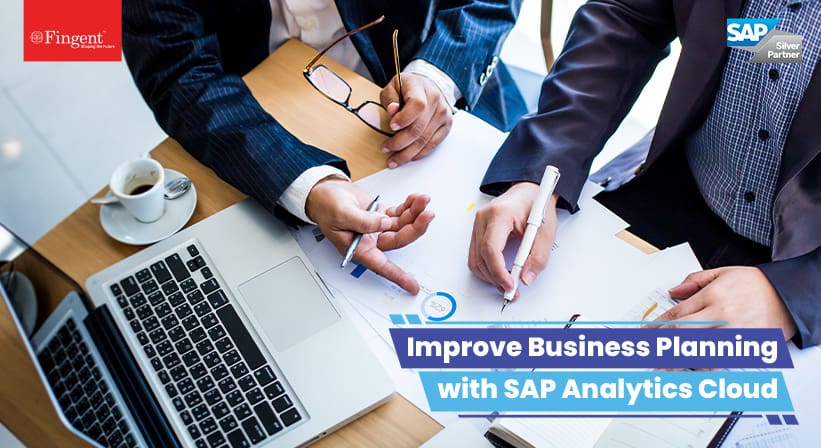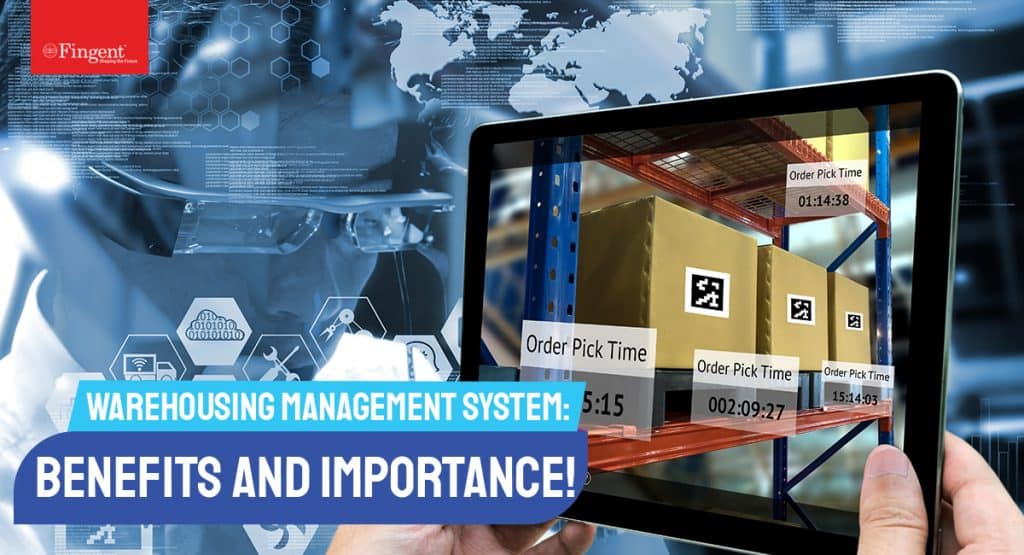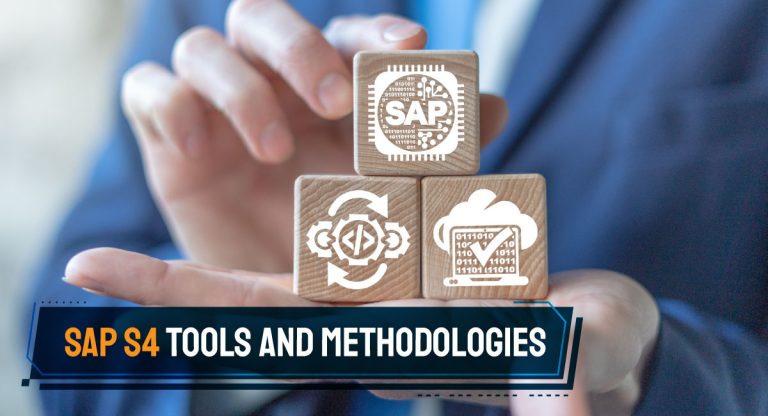Tag: SAP AMS
Today, technology unlocks the value of time, allowing us to easily juggle multiple tasks and accomplish much more in less time. For some time now, SAP has become the backbone of efficient business operations. It has helped many businesses streamline their operations and scale their business to never before imagined heights.
Have you implemented SAP yet? If you have, then you must see firsthand how amazing it is! In this blog, we will help you maintain that awesomeness by giving you some great tips on managing and troubleshooting common SAP errors and issues.
Why SAP Is No Longer An Option But A Necessity
To manage current processes, many businesses still use a wide array of legacy software programs and possibly cloud apps to handle different procedures.
Did you know: Enterprises add 1,061 applications on average to their ecosystem. – 2023 connectivity Benchmark Report by Mulesoft Research.
In many organizations, it is common for separate departments to purchase and develop their own software solutions, operating independently of one another. This can lead to the use of multiple software programs within a department, which often lack the ability to integrate with each other.
A 2023 connectivity Benchmark Report by Mulesoft Research shows that only 29% of the surveyed businesses’ applications are properly integrated.
As a result, businesses may struggle to create a unified ecosystem that meets their current needs. To address this, audit your current toolkit and consider implementing a comprehensive ERP solution that can integrate various business operations. SAP solutions offer the ability to integrate these modular apps and create a more cohesive business system. By using a unified approach, businesses can improve their overall operations and drive growth.
The report by Mulesoft Research further mentioned that only 36% of enterprises consider the lack of integration between siloed apps the biggest challenge to digital transformation. Now if you aren’t one of them and have already implemented SAP, that is commendable indeed! –
However, the SAP system can be quite intricate. Given that, issues and errors may arise due to various factors.
Read more: Driving Business Modernization with SAP!
Suggestions And Tips to Manage and Troubleshoot SAP Implementation Issues
Here are some suggestions for common SAP errors and issues along with tips to manage and troubleshoot those issues effectively.
Issue #1- Slow Performance
Various aspects affect performance. These include network issues, database problems, or system overload. SAP performance issues, if ignored, can cause serious problems. To troubleshoot and manage this try the following steps:
- Identify the source: Identify the component or area that is responsible for the slowness. You can do this by keeping a tab on SAP performance metrics like response times, resource usage, and so on.
- Analyze logs and traces: Use tools provided by SAP to analyze logs and traces.
- Monitor hardware and network components: Monitoring servers, storage devices, and network components can help ensure the hardware is adequately configured, updated, and optimized.
- Check system performance: Check system performance periodically to identify trends and patterns.
- Optimize database: Check for memory leaks and increase database cache if necessary. Perform regular maintenance tasks like defragmentation and indexing.
Issue #2 – Authorization
Authorization problems may arise if SAP users lack the necessary access to certain transactions or functions. Here are some steps you can take to address authorization issues:
- Check who has what authorization: Confirm that users have the appropriate authorizations for the pertinent transactions and functions. The specified user needs a specific authorization object. Use the SE37 transaction or SE80 in test mode. The result table is very compact and easy to understand for authorization experts.
To help solve authorization problems, you can ask yourself:
- What data did the user access to avail which function?
- What was the reaction of the system and how should it have reacted?
- How is the authorization check set up?
- Verify if the roles and profiles match: Ensure user roles and profiles are correctly assigned.
- Use the right tools: Utilize the authorization trace tool to identify any authorization problems.
Issue #3 – Data Inconsistencies
Data inconsistency problems can occur when data is incorrectly entered or updated in SAP. These issues fall into one or more categories such as unavailable data, internal inconsistency, inconsistent page, and inconsistent page set. To identify and troubleshoot data inconsistencies, try the following steps:
- Identify: Identify the database and the table space that contain inconsistent data.
- Prevent escalation of the problem: Limit access to the data before an attempt is made to resolve the inconsistency. Doing so prevents subsequent updates to the inconsistent data and thus prevents the problem from escalating.
- Verify data: Verify if the data entered and updated is correct in SAP.
- Search the data: Locate missing or duplicate data.
- Use the right tools: Use the data consistency check tool to identify data inconsistencies.
Issue #4 – ABAP Programming Errors
ABAP programming errors can have many causes and can interrupt the program. The most common reasons for these errors are non-handled exceptions, or that a handleable exception was not handled, a non-handleable exception was raised, an exit message was sent, or an assertion failed. Here is what you can do to troubleshoot the issue:
- Analyze the error message: Read the error message carefully to understand the nature of the problem. Look for keywords or specific error codes that can provide insights into the issue.
- Review the code: Examine the ABAP code where the error occurred. Pay attention to the line number mentioned in the error message. Check for syntax errors, missing or incorrect statements, or any potential logical issues.
- Debug the code: Use the ABAP debugger to step through the code and identify the exact point where the error occurs. Set breakpoints in the code to stop execution at specific lines and observe variable values to pinpoint the problem.
- Analyze data and variables: Evaluate the data and variables used in the code. Ensure they contain the expected values and are correctly assigned. Use data inspectors, watchpoints, or variable analysis tools to monitor their values during runtime.
- Check system logs: Review system logs, such as the ABAP runtime error log (ST22 transaction), to gather additional information about the error. Look for any relevant entries that can provide clues about the root cause.
- Apply software patches and updates: Ensure that your SAP system is up-to-date with the latest patches and updates. Some errors might be resolved by applying the relevant software fixes provided by SAP.
Issue #5 – Integration Issues
Integration issues occur when there are issues with data exchange between SAP and other systems. To troubleshoot integration issues, try the following steps:
- Identify the scope and symptoms: Clearly define the integration problem you are facing and identify the specific symptoms. For example, determine if it’s a data transfer issue, communication problem, or functional discrepancy.
- Review integration configurations: Verify the integration settings and configurations in both the sending and receiving systems. Check the integration points, interfaces, message types, mappings, and adapters to ensure they are correctly set up.
- Check system connectivity: Validate the connectivity between the systems involved in the integration. Ensure that network connections, firewalls, and communication channels are properly configured and accessible.
- Analyze error messages and logs: Examine error messages, log files, and monitoring tools specific to the integration scenario. SAP provides various tools like SAP PI/PO monitoring, SAP AIF, or SAP CPI for monitoring and error analysis. Analyze the messages and logs to identify any error codes, timestamps, or specific details that can help pinpoint the issue.
- Collaborate with integration partners: Engage with the stakeholders involved in the integration, such as functional consultants, technical teams, or external partners. Collaborate to understand their system configurations, share information, and jointly troubleshoot the issue.
Read more: Top Business Benefits to Gain with Fingent’s SAP AMS Services!
How Can Fingent Help
Automating the monitoring and optimization of SAP performance can significantly enhance your enterprise operations. It is a positive step towards maximizing productivity and efficiency. As a trusted industry leader, Fingent can assist you in optimizing your SAP system and other relevant tools to ensure they function seamlessly within your enterprise.
To avoid costly performance and security issues associated with SAP systems, it is advisable to consult our experienced SAP experts. At Fingent, we are proficient in tailoring SAP solutions to meet the unique need of your enterprise. Our team is equipped with global expertise in implementing SAP solutions across various industries and business sizes.
Contact us today to explore your SAP options and benefit from a seamless implementation that aligns with your enterprise requirements.
Stay up to date on what's new

Featured Blogs
Stay up to date on
what's new



Talk To Our Experts
SAP ECC and SAP S/4HANA are two key ERP software offerings from SAP that allow enterprises to simplify the management of business processes, enable effective data processing, and facilitate streamlined information flow across organizations. Though SAP ECC is the most commonly used ERP software, things will change as SAP ends its support for ECC 6.0 in 2027. As ECC is reaching the end of the line, the most practical way for businesses to benefit from SAP’s exceptional solutions is to migrate to SAP S/4HANA.
Like ECC, S/4HANA too offers solutions to enhance business process efficiency and the customer experience in areas like finance, inventory and asset management, sales, marketing, HR, logistics and supply chain, and product development, but in an incredible and unprecedented manner.
Before moving to the world’s most intelligent and modern ERP, it’s important to understand how SAP S/4HANA is different from its predecessor, SAP ECC.
What is SAP ECC?
SAP ECC is short for SAP ERP Central Component, the previous generation of SAP’s enterprise resource planning (ERP) software. Due to its modular design, SAP ECC is highly customizable and can be configured to suit the different needs of a business, such as finance, logistics, warehousing, human resources, product planning, customer service, and so on. The most striking feature of ECC is its ability to work with third-party or customized applications. For example, ECC can operate on a third-party database such as IBM DB2 or Oracle database and can work with customized applications like business messaging apps.
Due to its interaction with different components in the landscape, ECC is flexible, which also brings in more complexities. This is because a change in one component can affect how other parts function in the ecosystem. So, rolling out any change, such as customization, upgrades, add-ons, or enhancements, demands a thorough and careful testing of the landscape to ensure that your important business functions remain undisrupted.
With SAP phasing out ECC, users are left with only one alternative: moving to S/4HANA.
Read more: SAP for Business: 9 Ways to Maximize Business Performance
What is SAP S/4HANA?
SAP S/4HANA is the world’s most intelligent, complete, and modular cloud ERP software that simplifies your business landscape. It facilitates accelerated deployment by lowering costs with a standardized core and brings agility through an open, modular, scalable, and innovative platform. S/4HANA service management integrates crucial functions from various lines of businesses and industries and incorporates parts of SAP Business Suite Products.
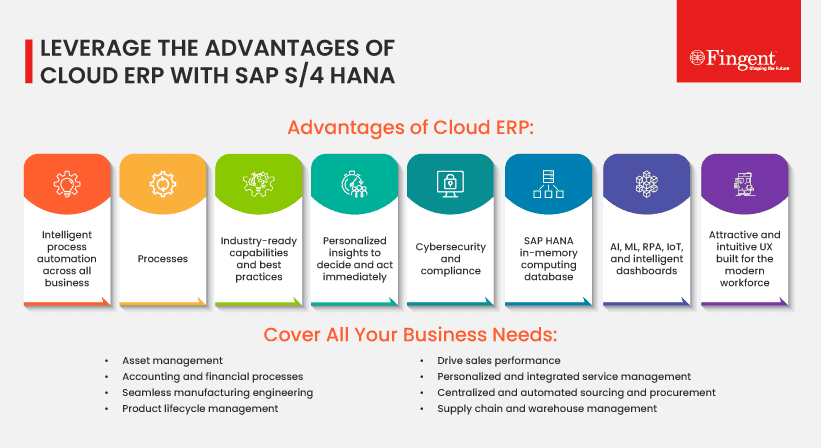
What is the difference between SAP ECC and SAP S/4HANA?
Though ECC provides modules covering a full range of industrial and enterprise applications that can be run on a database of the user’s choice, the legacy ERP system fails to leverage the intelligent technologies needed to be competitive today. S/4HANA differs from ECC in many aspects:
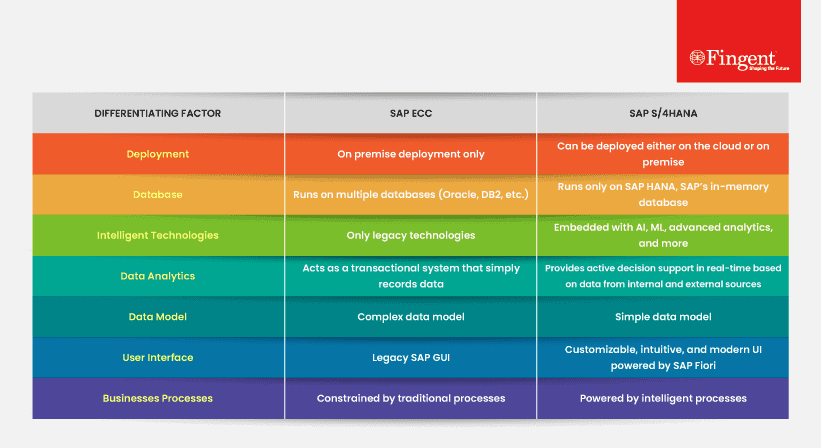
Why Move to SAP S/4HANA Now?
Making decisions based on accurate and appropriate data is critical to gain a competitive advantage in today’s dynamic world. With SAP S/4HANA, organizations can use data, people, and enterprise assets in an aggregated manner that best suits their business. Moving to SAP S/4HANA offers you the following advantages:
1. Simplified Technical and Data Architecture
Businesses are attracted to SAP S/4 HANA due to its simplified data table structure and access. SAP HANA’s in-memory computing platform provides a database that operates way faster than the database options used in ECC or any traditional OLTP system. In SAP S/4HANA, there is no need to separate OLTP and OLAP applications into different databases or applications, as a single HANA database can handle both types of operations effectively. The traditional OLTP systems are generally slow at reading and analyzing data that gets updated while processing transactions. SAP S/4HANA offers restructured data models, allowing customers to access data reports faster.
2. Access to Innovative Technologies
Introducing a fresh bulk of innovative technologies will help you address all the upcoming business requirements. Built-in machine learning is an outstanding capability of S/4HANA that automates key business processes across your organization. Real-time insights, predictive BI, and automation free your employees from mind-numbing work and help them focus on value-adding tasks. Access to innovative trend technologies will keep you one step ahead of your competitors.
3. Invest in Your Growth Strategy
You can build an appropriate strategy with fully-automated data if your business is growing and venturing into new markets. Remember that your current SAP ERP has a shorter shelf-life. Failing to catch up with the latest trends and developments will be costly. Investing in an intelligent ERP system is a business imperative, for it will support and complement your growth strategy and increase your speed-to-market.
4. Consistent User Experience Across All Devices
SAP Fiori – the design system that powers the user experience of SAP S/4HANA – defines how the new business value of S/4HANA is delivered to users. The Fiori design system delivers a modern user experience that works on various devices (desktop, laptop, tablet, smartphone) to ensure faster response times and better performance. Digital age user experience, end-to-end real-time analytics, new business processes (such as Group Reporting, Central Procurement, and Predictive MRP), and intelligent automation (such as Situation Handling, AI/ ML proposals, RPA) scenarios are the key value drivers for using SAP Fiori in SAP S/4HANA. Above anything, you need SAP Fiori to configure, adapt and extend SAP S/4HANA.
5. Avert The Risk of Falling Behind
SAP is no longer investing in ECC as the legacy ERP is reaching its end of life in 2027. On the other hand, SAP S/4HANA incorporates many innovative features through its dynamic quarterly releases that make its core even more intelligent. Several companies around the globe have already started their migration, and some are working fervently on their migration plans. Considering the predicted shortage of skilled SAP consultants and the rising cost of quality consulting services, it’s vital to bridge the gap and avert the risk of falling behind by acting now when there are available resources. Working with a trusted and certified SAP specialist, you can keep your project time, budget, and risk to the minimum. Also, if you have any plans to renew your hardware or hosting solutions, the SAP S/4HANA migration process and hardware purchase should happen simultaneously to avoid any non-compliance.
How Fingent Helps You Accomplish a Seamless Migration to SAP S/4HANA?
With Fingent, your SAP S/4HANA journey can never be complex. We offer the right S/4HANA solutions, expertise, and end-to-end services, including strategic advisory on choosing the right S/4HANA migration or conversion path to suit your requirements.
SAP S/4HANA Conversion Services
Our S/4HANA conversion services are customized to enable the smooth and rapid transition of your business systems, processes, and applications. We offer:
- Convert to SAP S/4HANA on a fixed budget and schedule
- On-premise or cloud-hosted S/4 implementation
- Selective Data Transition (Hybrid approach)
- More flexibility, higher success rate, and lower cycle time
- Enhanced UX, lower costs and risks, and ongoing support services
SAP S/4HANA Migration Services
Improve your enterprise’s resilience by championing your migration to SAP S/4HANA with Fingent. Here are the SAP S/4HANA journey steps we follow:
- Detect challenges, define the business case, and decide where to start
- Pre-configured scenarios and process mining to mitigate risks
- Identify deployment and hosting options
- Perform pre-checks before implementation
- Functional scope and custom code analysis
Our unique SAP S/4HANA service implementation methodology is a tried and tested practice with several successful implementations. Fingent top software development company will combine the best SAP Activate methodology, preconfigured solutions, focused industry templates, automation solutions, and a modular and agile framework. We help you integrate strategy, process, policies, people, and technology to ensure that your organization is process-driven. Transform your complex IT landscape into a simplified business system with SAP S/4 HANA.
Contact our SAP consultant to learn more.
Stay up to date on what's new

Featured Blogs
Stay up to date on
what's new



Talk To Our Experts
Despite the rampant economic implications of the COVID-19 pandemic, numerous small and mid-market businesses (SMBs) managed to survive the odds by embracing modern technology. With a cloud-first approach and a partnership-driven ecosystem, several SMBs demonstrated tremendous growth in these extraordinarily challenging times. Americas’ SAP User Group (ASUG) survey observes that most of their mid-market customers expect to grow at a rate of 56% over the next five years. If you’re an ambitious mid-sized business with a large-scale growth plan, it’s time to outgrow your accounting software and adopt a modern ERP platform.
Read more: How Organizations Can Gain a Competitive Edge by Implementing Digital Core ERP

Many small businesses hesitate to invest in intelligent ERPs due to high costs and technical complexities. Platforms like SAP Business ByDesign allow SMBs to oversee their whole business, improve compliance, increase cash flow, and expedite reporting. SAP Business ByDesign is a sophisticated cloud ERP software designed specifically for mid-market users. How does ByD enable your business to build a robust technology foundation and drive growth? Let’s explore this in this blog.
What is SAP Business ByDesign?
SAP Business ByDesign (ByD) is an integrated, on-demand, full-featured, cloud ERP solution that can run your entire business operations on a single platform. ByD is sold and operated as software as a service (SaaS) and is designed specifically for small to mid-sized enterprises as well as subsidiaries of large corporations. SAP Business ByDesign can integrate and manage all your core business processes such as financials, project management, human resources, procurement, customer service, sales, integrated business analytics, and supply chain, among others.
SAP Business ByDesign is built on the standards of service-oriented architecture (SOA). The platform attains integration between business capabilities via message exchanges. Multi-tenancy enabled SAP NetWeaver is the underlying technology stack of ByD. The platform leverages HANA, SAP’s in-memory database.
Read more: SAP HANA – The Game-Changing Technology
SAP ByD Unifies Core Business Functions
SAP Business ByDesign works as an end-to-end business suite that unifies the following core business functions:
1. Financial Management
ByD helps assess your company’s financial position in real-time. You can use the software to administer financial and managerial accounting for multiple operating units, currencies, and reporting paradigms. Using ByD, you can analyze your organization’s customer and supplier transaction data to better understand your cash position.
2. Customer Relationship Management
SAP Business ByDesign allows your business to efficiently manage your sales, marketing, and service processes. Personalized customer data enables marketers to run successful campaigns, improve lead generation and qualification, and expedite handover to sales. The software improves your account management by automating key sales functions, from contact interactions to billing. ByD equips your employees with the right tools and insights to deliver exceptional customer service.
3. Human Resources Management
SAP Business ByDesign simplifies employee onboarding processes. Employees and managers can use the software to access all the relevant information. ByD streamlines time, attendance, labor, and compensation management by centralizing data and self-service processes. Employees can self-manage their timesheets, personal data, and procurement processes. The software lets your payroll integrate with third-party payroll providers for faster processing. ByD also helps automate policy-compliant requests and approvals.
Read more: Choosing Between SAP Business One and SAP Business ByDesign

4. Project Management
SAP Business ByDesign helps manage projects of all sizes and complexities through real-time project collaboration and monitoring. If you’re using Microsoft Teams, you can directly access your ByD application from Teams.
5. Procurement
ByD helps maintain a centralized database to store supplier and product data. You can seamlessly manage multiple vendor contracts and negotiate better prices with real-time information. This saves your cost and time.
6. Supply Chain Management
SAP Business ByDesign streamlines customer and supplier collaboration with improved supply-demand matching. This ensures that the product design meets customer expectations and shortens the time to market. The software helps control your material flows and automates relevant processes across manufacturing, warehousing, and logistics operations. All these lead to better procurement planning.
Business Benefits of SAP Business ByDesign
Digital transformation is the prerequisite for an intelligent enterprise. With its ease of use, insightfulness, and openness, SAP Business ByDesign enables SMBs to drive digital transformation efforts successfully.
Read more: RISE with SAP – How Fingent Can Help Explore Business Transformation as a Service (BTaaS)
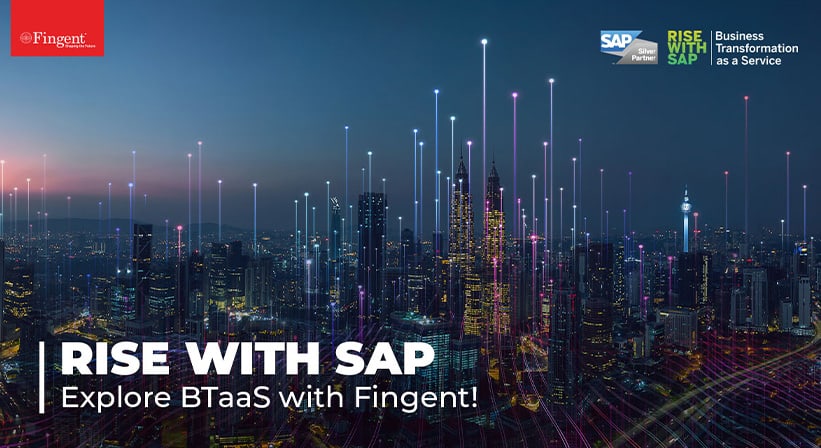
Here’s how your business can benefit from SAP ByD:
- Offers built-in analytics to leverage real-time data across all operational areas. This supports intelligent decision-making.
- Anytime, anywhere access via web and mobile helps build an empowered, mobile-connected workforce.
- Scalable technology and quarterly upgrades ensure that your ByD platform is always up-to-date.
- Though designed for small and mid-sized companies, the platform comprises all the features and capabilities utilized by large enterprises.
- A highly configurable business management solution that requires minimal customization.
- One of the most cost-effective ERP solutions that reduces your operational expenses.
- Gain 360-degree visibility of your business, with instant access to reports on enterprise-wide operations.
Case Study: Fingent helped a real estate giant reduce manual work, improve TAT, and increase profitability by integrating multiple role-based mobile apps into their SAP ERP system. Download now!
SAP Business ByDesign Mobile Strategy Updates for 2022
The new SAP Business ByDesign mobile strategy 2022 aims to help customers access more preferred features on their smartphones without any complexity. Currently, SAP Business ByDesign supports five mobile apps – SAP Business ByDesign Mobile, SAP Manager Approvals, SAP Time Recording, SAP Project to Go, and SAP Project Cockpit. SAP will now focus on improving the SAP Business ByDesign Mobile App that integrates all these features onto a single platform. Following are the changes to note:
- Starting from August 2022, customers will be able to access all the ByD features using a single app, that is, SAP Business ByDesign Mobile App. No app swapping will be required anymore.
- From 1st May 2022, users will not be able to download and install SAP Project to Go and SAP Project Cockpit apps from the app stores.
- From 1st August 2022, users will not be able to download and install SAP Manager Approvals and SAP Time Recording from the app stores.
- By removing existing installations from your devices and switching to the Business ByDesign mobile app, you can access all these features using a single app. It accelerates your time-to-market and helps you benefit from streamlined business processes.
Experience Seamless Business Transformation with Our SAP Services
As more businesses switch to remote operations, there is an increasing dependency on mobile devices to ensure business continuity. It’s important for small and mid-sized businesses to focus on building a future-driven business model powered by cloud and connected technology. SAP Business ByDesign enables you to accomplish these goals easily. In SAP’s own words, “Business ByDesign connects every function across your company with proven best practices and in-depth analytics.”
Read more: How SAP ERP Software Implementation Benefits Your Business
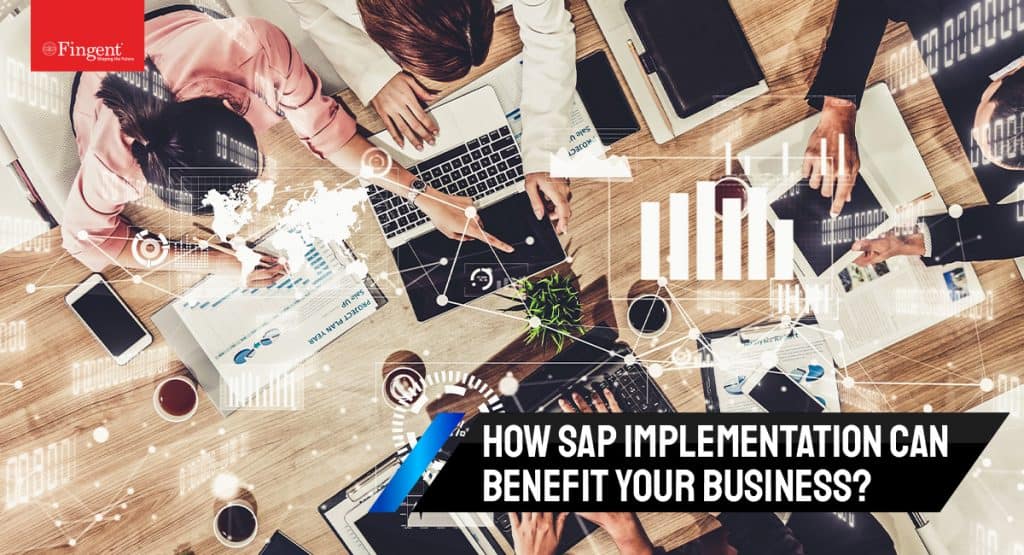
Fingent has the expertise to customize and implement SAP Business ByDesign for all sizes of businesses, across verticals such as professional services, manufacturing, real estate, retail, logistics, and so on. Our cloud ERP implementation services help transform your organization into an intelligent enterprise. We are a Silver Partner of SAP with 18+ years of experience in implementing SAP services and solutions. Our goal is to help you adopt the right technology that solves your business challenges without any complications. Contact us to understand how your business can benefit from SAP Business ByDesign.
Stay up to date on what's new

Featured Blogs
Stay up to date on
what's new



Talk To Our Experts
With proven expertise across 25 industries and an end-to-end suite of intelligent enterprise solutions, SAP has triumphantly cemented its position in the enterprise application software market. According to the World Economic Forum, SAP customers constitute 87% of total global commerce. Right from the R/2 commercial mainframe applications designed in the 1970s to the latest SAP S/4 HANA and its enormous suite of intelligent software products, SAP solutions have enhanced the competency of organizations with deep business insights and improved enterprise collaboration. SAP solutions include both technical and functional modules. While SAP ABAP, SAP Basis, SAP Security, SAP Solution Manager, CRM, etc. are technical modules, components such as Material Management (MM), Production Planning (PP), Financial Accounting and Controlling (FICO), etc. are examples of functional modules. All these modules of SAP closely integrate with each other to provide the best functionalities and solutions for businesses.
Read more: 8 ways SAP ERP software implementation helps your business

This post analyzes ABAP, one of the core technical modules of SAP, to understand how the platform enables businesses to run better.
What is SAP ABAP?
Advanced Business Application Programming or SAP ABAP is the principal programming language supported on the SAP NetWeaver ABAP server and the applications that run on it. Typical examples of ABAP-based applications include SAP ERP (previously known as R/3) and the present SAP S/4HANA.
SAP ABAP is the oldest and the most popular of SAP’s four key application platforms, together with SAP NetWeaver Java, SAP HANA, and SAP Cloud Platform. ABAP is used by SAP to deploy its applications on the NetWeaver ABAP platform. It’s different from the universal programming languages like Java because all ABAP programs and compiled code reside only in the SAP system. ABAP is renowned as the proprietary fourth-generation programming language (4GL) of SAP, developed to process massive volumes of data in SAP business applications.
ABAP enables businesses to customize their workflows related to material management, production management, supply chain management, financial accounting, and all other modules of SAP. This helps businesses reduce the time-consuming manual processes involved in data processing, particularly when they have more data to process.
Though some of the popular SAP applications such as SuccessFactors, SAP Ariba, SAP Business One etc. run on other programming languages, the role of ABAP is crucial, especially when these applications integrate with ABAP-based applications such as SAP ERP and SAP S/4HANA. As of 2021, there are five million registered ABAP developers worldwide, which indicates the robustness and credibility of the ABAP foundation for a wide range of SAP business applications.
Read more: SAP for Business-Making SAP support available at your hand

How does SAP ABAP accelerate business transformation?
ABAP was developed by SAP to enhance and expand the functionality of SAP systems. Here’s how ABAP is adding value to SAP users across the globe.
1. Aids mission-critical business processes
Since the 1980s, ABAP technology has been serving as the rock-solid foundation of SAP’s application portfolio. Several mission-critical business functions rely on ABAP for its scalability, robustness, and extensibility. ABAP is the underlying technology that steers SAP’s celebrated platforms and flagship suites such as SAP S/4HANA, SAP ERP (R3), and the next-generation data warehouse – SAP BW4/HANA. Thus, ABAP helps monitor and improve strategic business measures.
2. Enables customization of SAP business applications
Due to its availability as an independent platform, ABAP is primarily used to develop cutting-edge, bespoke SAP business applications. Custom ABAP development allows users to configure and tailor SAP modules based on their business requirements. Since the initial days of ABAP, SAP customers and partners have established a tradition of creating custom codes and add-ons that function effectively on the ABAP platform.
3. A holistic development platform
ABAP combines the innovative capabilities of SAP HANA (SAP’s in-memory database), the power and consistency of the ABAP server, and the digital UX potential of SAP Fiori (SAP’s UI technology). All these features make it a holistic development and runtime platform. Continuous developments by SAP make ABAP capable of addressing new business scenarios.
4. Reduces the development cost
ABAP offers a centralized, shared, and integrated development environment that allows multiple developers to work on the same development objects simultaneously. Hence, it’s easy to track the changes to development objects and push them to QA or production environments, without losing version control. The integrated, self-compiling nature of ABAP helps reduce the development cost.
5. Offers excellent development environment and tools
The key highlight of ABAP Platform 2021 (the underlying technology of SAP S/4HANA), is the ABAP Development Tools (ADT) that support the entire development lifecycle in Eclipse IDE. It improves the efficiency of developers and offers enhanced SAP HANA capabilities. ABAP Platform 2021 facilitates the seamless transformation of your existing SAP business suite to SAP S/4HANA (cloud or on-premise) and SAP BTP (Business Technology Platform).
6. Improved focus on user experience
ABAP RESTful Application Programming Model promotes the development of SAP HANA-optimized Web APIs, SAP UI5, and Fiori applications. ABAP development tools support browser-based, device-responsive, and role-based development of application functions. It enables users to switch to different devices and collaborate effortlessly.
Read more: Top 3 UI offerings from SAP: Fiori, Screen Personas, and Lumira

7. Extensible to the cloud
ABAP Platform 2021 has been improvised to create customized extensions in the cloud. The growing number of SAP customers who’re adopting SAP S/4HANA Cloud will benefit from ABAP’s tailored extensibility. The users will get access to more innovative features developed by SAP and can keep their software up-to-date with regular patches and upgrades.
8. Change and transport management
ABAP offers comprehensive change and transport management for the development projects organized in the ABAP Workbench and also helps in customizing those projects. It also facilitates to transport the changes between the SAP systems in your environment.
How can Fingent help your businesses unlock the potential of SAP ABAP?
ABAP is primarily a developer-friendly language. However, associating with the right SAP partner can help even the non-technical SAP users to master the technology. We’ve helped several businesses in identifying, customizing, implementing, and maintaining ABAP within their SAP systems. As a Silver Partner of SAP, we help customers cut their development efforts and costs, reduce technical complexities, and bridge skill gaps. Our SAP application development practice enables businesses and aces IT professionals to collaborate effectively and deliver cutting-edge enterprise applications across any platform, device, and tech stack in the shortest span.
Stay up to date on what's new

Featured Blogs
Stay up to date on
what's new



Talk To Our Experts
The pandemic put business challenges on an amplifier and made it look insurmountable. Here we all are though, crossing that barrier and making things work. Some challenges persist though. One area is the acceleration of the remote working scenario. Besides, sectors like manufacturing and Life Science have the challenge of accomplishing more tasks efficiently in less time.
This intimidating scenario drives the need for an intelligent enterprise. That’s exactly what SAP Business Technology Platform (BTP) empowers enterprises in all sectors. But what is SAP BTP?
This article describes what SAP BTP is. It also explains all that you must know about SAP BTP and how you can leverage it to grow your business and remain resilient.
Read more: It’s time to transform your business for the new digital age: Rise with SAP!
What is SAP BTP?
SAP BTP is an open platform as a service. It can integrate SAP and third-party applications and extend application capabilities. It can empower an organization to exploit data to solve its business problems.
SAP BTP can provide in-memory capabilities, core platform services, and unique microservices. It can help develop the exact application needed quickly, easily, and economically. All this without investing in local infrastructure.
It is a business-oriented technology platform for your SAP and third-party applications. It can unlock value and drive growth for its clients. SAP BTP unifies a plethora of technology stacks.
SAP BTP covers a wide range of functionalities. These range from document management to globalization, to blockchain and ML. Organizations can leverage SAP BTP services to automate business processes, manage decision logic. It also allows them to gain end-to-end process visibility.
But what is SAP BTP made of?
SAP BTP consists of four building blocks:
- Database and data management: This includes SAP HANA and SAP HANA cloud.
- Analytics: Including SAP Data Warehouse Cloud, SAC, and Business Objects BI.
- Application Development and Integration: Includes SAP Integration and Extension suites and SAP Process Orchestration.
- Intelligent Technologies: Including AI, ML, and IoT.
How Is SAP BTP Revolutionizing Business Operations?
SAP BTP can be used to build and extend SAP applications quickly. Here are the top three scenarios:
1. Integration
Most organizations prefer best-of-breed applications. With the journey to the cloud, the system landscapes are increasingly complex and business processes remain disconnected.
Today, most businesses have processes spanning from on-premise to cloud, and across multiple vendors. Plus, to complicate matters, some organizations continue to support their legacy applications along with various platforms and open-source technologies. SAP BTP allows seamless integration by simplifying development and quickening deployment.
Read more: Improve business planning with SAP Analytics Cloud!
These complex environments can only be managed with proper integration. While the value of these landscapes is decreasing, the complexity and cost of such integration are increasing.
SAP BTP can help organizations to refine and enhance their business operations along the entire value chain. It can do this by connecting applications, data, and experiences across SAP and beyond.
SAP Integration Suite uses a set of connectors and APIs to securely connect and integrate business processes. This can accelerate an organization’s time to value in a secure, sustainable, repeatable, and cloud-centric capability.
2. Data management
Today, we live in the age of data. But most organizations fail to get value from it. They gather the data and store it in disparate mediums. This only leads to a disrupted flow of information.
Your business success depends on how you analyze your data and what you do with the results. SAP BTP allows you to transform your data into value quickly and efficiently.
Data management is all about creating value from the data. If a business wants to exceed in today’s global economy, it must act on real-time business data. However, both the structured and unstructured data volumes create challenges for organizations.
Instead of accelerating digital transformation, data has become the anchor that is holding businesses in the old way of working. This has led to data swamps putting them in a worse position than they were ten years ago.
SAP BTP solutions are designed to provide flexible and user-first data management. It allows organizations to discover, connect, orchestrate data with internal and external data flows. This enables business leaders to access near real-time data and drive insight and value back into their businesses.
3. Extensibility
Businesses must continue to innovate rapidly if they want to stay relevant. During the pandemic, most businesses had to innovate their business models to adapt to changed circumstances such as local lockdowns and shortage of distribution chains.
As new businesses emerged with their reduced innovation cycles, they posed a serious threat to established businesses. Organizations must thus be empowered to build, extend, and enhance their application landscape so they can stay relevant while rapidly realizing new opportunities.
SAP Extension Suite allows organizations to access prebuilt extensions through an integrated digital marketplace. SAP BTP empowers businesses to speed up integration, find real business value from data, and extend SAP landscapes to innovate.
For example, let’s discuss the SAP Workflow Service. The SAP Workflow Service is part of the SAP BTP portfolio. This service allows businesses to extend their business processes. These extensions allow organizations to adopt business process changes quickly and in a non-disruptive way.
It provides unique monitoring applications that help monitor deployed workflows and their instances. Additionally, it also allows REST APIs to read, create, modify, or cancel workflow and task instances.
Integrating SAP Workflow Management with SAP Conversational AI allows organizations to leverage digital support for their workflows, process cycle times, recommendations. Plus, it allows them to reconcile both structured and unstructured workflows.
This can increase the level of automation enabling businesses to better manage overall complexity, reduce manual effort, and associated errors.
Read more:Top 7 benefits of adopting SAP Intelligent Robotic Process Automation
How can Fingent help leverage SAP BTP being SAP Silver Partner?
As SAP Silver partner, Fingent can apply design thinking and agile methods to develop industry apps on SAP BTP. We can help deliver innovative solutions with speed and agility.
When we combine our expertise at Fingent with SAP BTP, we can leverage disruptive technologies such as AI and predictive analytics and innovate across industries and business functions. This can help our clients extend capabilities, integrate intelligent technologies, generate actionable insights, and amplify results.
We can help our clients gain the flexibility of public or private cloud infrastructure to create an intelligent enterprise experience. Along with SAP BTP, Fingent can help your intelligent enterprise take a big step forward. Give us a call and let’s discuss how best we can help you.
Stay up to date on what's new

Featured Blogs
Stay up to date on
what's new



Talk To Our Experts
“By failing to prepare, you are preparing to fail.” – Benjamin Franklin
Profound words that underline the importance of business planning. Business planning is the right strategy to ensure business productivity. With business getting more complex and planning tools filling up shelves, enterprises need a more straightforward way to manage business plans and improve sales. Only a few of the many products available have a holistic end-to-end approach to information analytics services.
SAP Analytics Cloud is a distinct analytics tool. It integrates analytics throughout the business process and across every level of an organization. It is an impeccable and compatible solution for enterprises that are involved in sectors like manufacturing, finance, and sales. This is an effective cloud-based tool that can analyze the data irrespective of the size of your firm. Plus, it allows you to transform this data into charts, tables, graphs, and more.
This article will help you determine how SAP Analytics Cloud enables enterprises to improve business planning. Read on to check out the features that will let you boost your business and help you stay competitive.
Top Two Features Of SAP Analytics Cloud For Effective Enterprise Planning
SAP Analytics Cloud is the first and the only tool in business intelligence that caters to all aspects of the business. It assists you in organizing and managing your data visualization, business planning, and predictive analysis.
Here are the SAP Analytics Cloud core planning features:
1. Augmented Analytics
Augmented analytics capabilities can help existing AI-powered analytics to offer business insights in real-time. You can add these capabilities to business planning and workflows. This contains an enhanced ‘Search to Insight’ capability allowing users to ask questions about data in natural language. Further, it can automate insights that include values and simulations.
The ‘Smart Predict’ feature can help train models to predict future outcomes without manual intervention. This enhances user experience allowing business analysts to predict future outcomes more accurately and automate decisions, preventing time lapse. Ultimately, SAP Analytics Cloud smoothens the process and improves business management.
Read more: SAP Analytics Cloud: Creating Dynamic Visual Stories
2. Enterprise planning
Collaborative enterprise planning ensures one version of the truth across the enterprise. Thus, it brings users together to align with the plan leading to better business outcomes.
The zero-based budgeting feature helps allocation of resources efficiently. The embedded collaboration tools ensure that every member of the finance team is aware of relevant information while they discuss finance issues. Plus, all the relevant budget templates are recorded and saved for the quick action and enhanced productivity.
SAP Analytics Cloud allows its users to analyze, plan and predict at one location. This can speed up planning cycles and help make informed decisions. Built-in features such as financial modeling, automated reporting enable enterprises to make better end-to-end planning decisions.
Planning and consolidation applications allow businesses to connect complex planning processes to the cloud. Thus, enterprises can create business plans and adjust them within the SAP Analytics Cloud. This allows enterprises to extend and align their plans across the organization leading to better outcomes.
Read more: Business Intelligence in SAP: How It Helps You Become a Data-driven Organization
Features That Improve Agility In The Enterprise Planning
1. Data and data visualization
Data visualization represents your entire business process. It is this important to find all the possible ways of viewing and understanding the data at a glance. This is where SAP Analytics Cloud can help. It can help make your data highly visible. These analytics offer quick answers to critical questions that can improve your business decisions.
Businesses need to gather enormous amounts of data each day from all their departments and other sources in sales. The next challenge is storing all this data in a secure place. SAP Analytics Cloud is the perfect place to store your data as it is most secure and easily accessible to all relevant people in your organization.
Read more: 7 Crucial Business Challenges Solved by SAP Analytics Cloud
2. Models
You do not need technical expertise to create a model from unrelated data sets of your company. It is quite similar to adding data to a story. Depending on the type of data, your models can either be simple or complex.
In any case, models help you organize present your data so that you can gain insights into your business. The models in SAP Analytics Cloud organize and present the data in rows and columns. This offers a unique, clear view of your data that is ready for analysis.
3. Stories
Stories occur in two phases: data view and pages. These two capabilities can enable you to gather data and connect it to create a model. This model is refined when you add data to make a story. These stories can empower you to make quality decisions for the success of your business.
What Are The Benefits Of SAP Analytics Cloud?
SAP Analytics Cloud offers many benefits for enterprises that are on the SAP. Here are a few:
1. Access data on the fly
SAP Analytics Cloud can be integrated to work both on Android and iOS devices alike. It allows your users to manage all their business activities even on a small screen from anywhere, at any time.
In today’s fast-moving world, your finance team needs the ability to create viable forecasts at a moment’s notice. Using SAP Analytics Cloud will enable your business process to remain proactive, not reactive.
2. Real-time insights
SAP Analytics Cloud functionalities allow all relevant users to generate instant insights to enhance decision-making and improve business outcomes.
3. No more silos
SAP Analytics Cloud allows for integrated planning across your organization. This means you can rest assured that all those involved in the decision-making process have the whole picture, not just a small part.
4. Customized dashboard
Enterprises are always on the lookout to improve data visualization, which helps in having a better interface for successful operations. Thankfully, SAP Analytics Cloud allows its users to customize their dashboards to help them navigate through the system and offer a personalized look. This way, business owners have relevant data on their interface just the way they like it.
5. Increased efficiency
SAP Analytics Cloud facilitates easy collaboration across your organization. This allows for quicker approvals, contributions, and comments. Plus, automation and ML helps in creating plans that are more productive, leading to faster results.
6. Minimize errors
Integrating SAP Analytics Cloud with SAP S/4HANA will allow the enterprises to minimize or eliminate errors that occur while making changes on multiple files on the cloud. You can make changes without manual intervention in the source system.
Read more: SAP S/4HANA Journey: 8 Ways C-level Leaders & Executives Can Derive Business Value
Power Charge Your Business
SAP Analytics Cloud is unique. It offers businesses real-time data to manage their resources effectively. Their tools keep getting newer updates to make it more reliable. As an SAP Silver Partner, Fingent has the expertise necessary to help you make the best use of this power-packed tool. Let us discuss your business and see how SAP Analytics Cloud can help you. Call us.
Stay up to date on what's new

Featured Blogs
Stay up to date on
what's new



Talk To Our Experts
The greatest business challenge of our time is the steady acceleration of change in all areas of trade. The pandemic has only accelerated these digital shifts. Transforming your business is necessary to stay relevant and competitive. The scale of digital challenges can be daunting to businesses. Understandably, some businesses may feel lost in the current digital maze. But, to stay agile and competitive, business leaders must strategically transform their business. Early this year, SAP announced a new service called “Rise with SAP.” This blog attempts to clarify what is included in Rise with SAP and how it can transform your business.
What is “Rise with SAP”?
Rise with SAP is a BTaaS (Business Transformation as a Service). The objective of this product is to accompany and accelerate business transformation step by step.
Rise with SAP is a single subscription contract. It provides access to a variety of tools and services that focus on assisting with your business transformation efforts. It is a new way to redesign processes for better business outcomes.
Rise with SAP can help your company to adapt business processes on your timeline and your terms. It helps them continuously unlock new ways of running businesses to stay ahead of the competition. It can speed up the otherwise sluggish adoption of SAP S/4HANA.
Read more: SAP S/4HANA: Redefining End-To-End Solution
How Is “Rise With SAP” Transforming Businesses?
Rise with SAP can holistically transform your business with a fast time to value, regardless of your starting point. Rise with SAP is like a moving company that provides a checklist, packers, containers, and services like replacing old appliances and installing new ones. It provides a blueprint that a company can implement on its own terms and at its own pace. What is the benefit? One contract and one responsible party for all services. It simplifies your journey in four simple steps.
Step 1: A business model redesign
This step helps businesses redesign and optimize business processes and implement the best practices in their verticals. In other words, it is a way to analyze how your business processes perform and obtain tailored recommendations.
A successful digital transformation project requires IT and business leaders to work together. This is why this analysis motivates all in your business to adapt to new business models.
Step 2: Alignment with customer journey
This is the key element of Rise with SAP. SAP realizes that each organization requires a unique path forward. Here are four starting points for digital transformation:
- Digitally grown startups and other innovators that need to scale with speed
- Companies that began their journey into the new world of modular ERP cloud applications are now ready to go further
- Organizations that have started digital transformation at the outer edges, now need to focus on their core
- Companies with a long heritage and history with a complex on-premises system
Realizing the fact that each of these starting points requires a unique path, Rise with SAP provides a highly customizable, subscription-based model.
Step 3: A technical migration
Rise with SAP includes technical services that ensure painless migration to a standard, modular, and flexible landscape. Such a flexible landscape with a consistent data layer enables businesses to react faster to ever-changing business demands.
This includes essential services from SAP and their partners. These services help eliminate modifications and custom code. Besides, it aids in harmonizing and governing a company’s data layer. Such accurate data will help businesses make informed decisions and strategize their business processes for greater advantage.
Step 4: Build an intelligent enterprise
Each company’s roadmap to success may vary but the destination is to become a digitized and intelligent enterprise. Quickly adopting S/4HANA is the key to reach that destination. To that end, Rise with SAP offers a powerful solution to get there by eliminating roadblocks and enabling its customers on their journey.
SAP believes that their customers can realize the value of their investment with up to a 20% reduction in TCO over five years as compared to a traditional ERP deployment. Definitely worth looking into, wouldn’t you say?
Read more: SAP for Business: 9 Ways to Maximize Business Performance
Components of Rise with SAP
An ideal business transformation process requires a selection of coordinated components. Rise with SAP consists of five such components that serve as the basis for transformation.
- Business process intelligence: It helps in understanding, visualizing, and transforming your processes.
- SAP Business Network “starter pack”: The intelligent enterprise “starter pack” includes SAP Business Technology Platform. This platform provides a single semantic layer across your organization. It serves as the basis for business transformation.
- Cloud credits: The “starter pack” also includes an ERP system with built-in intelligent technologies. This enables your business to transform with intelligent automation. Plus, the starter pack also provides credits for accessing SAP Business Network. This allows companies to better manage their supply chains and react quickly to market changes.
- Embedded tools and services: Ensure pain-free business migration to the SAP S/4HANA Cloud.
- SAP S/4HANA Cloud: Rise with SAP provides access to the company’s modular cloud ERP solution.
How Can Fingent Help Leverage These Benefits?
Rise with SAP provides access to a comprehensive bundle that can help streamline your business transformation. However, for successful implementation, you will also need an experienced partner that can provide advisory, implementation, or application management services.
Here is where Fingent can help you. As an SAP Silver partner, Fingent has acquired a wealth of experience to provide you with a structured set of services that complement Rise with SAP.
1. Advisory services
Before you embark on business transformation, you need to assess several aspects. These include trends in your industry, assessment of your business, your existing technology environment, and opportunities for future business growth. Working with an experienced partner such as Fingent can make all the difference. Our strategies can eliminate obstacles to unlock new business value.
2. Implementation services
As an SAP Silver partner, Fingent can provide a range of implementation services. We can tailor implementation strategies to help you achieve your business objectives quickly and efficiently.
3. Application management services
Fingent offers a full set of solutions that move beyond tactical efficiency gains. We provide flexibility and the latest strategic capabilities that smoothen business transformation and innovation.
Read more: How Fingent Enables e-Invoicing for SAP Users to Stay Compliant with GST India Regulations
Over to You
Rise with SAP is likely to galvanize the market to be the most cost-effective way to move to SAP S/4HANA. It will help overcome many hurdles that SAP ERP customers are facing. Give us a call today and let’s get talking on how to get you on to this new dynamic tool asap.
Stay up to date on what's new

Featured Blogs
Stay up to date on
what's new



Talk To Our Experts
Streamline And Enhance Your Warehouse Management Operations With SAP EWM
Worldwide, companies spend an average of €300 billion a year on warehousing, either in-house or through third-party logistics. The rise of eCommerce and the growth of global supply chains increase warehousing operations costs for enterprises. In addition, with the pandemic heightening consumers’ interest in eCommerce, they expect instant delivery of products. To cater to this dynamic demand, some logistic companies increased the number of their seasonal employees. With this demand continuing to rise, it becomes imperative that warehouse management processes be optimized.
Read more: Warehousing Management System: Simplify Operations & Scale Your Business
Warehouse management is currently undergoing a modern-day makeover to meet growing demands. Therefore, industry leaders must take steps to optimize warehouse management to keep pace with faster requirements and ever-increasing volumes. SAP Extended Warehouse Management (SAP EWM) streamlines, simplifies and optimizes your warehouse operations. This blog considers how SAP EWM can benefit your business.
Challenges In Supply Chain Management Today
Supply chains are at the core of business operations. Therefore, supply chain management needs to overcome several challenges that impact the bottom line of their business.
Read more: Top Challenges Faced By Logistics Management Today
Here are some challenges companies should be aware of:
1. Identifying Bottlenecks In Customer Service
Customers’ demands have become extremely specific. Plus, they expect to be notified about any possible delays. Therefore, supply chain management can benefit from advanced planning and scheduling systems that can help them identify bottlenecks. This can help them prevent delays or notify the customer of a possible delay.
2. Gaining High Supply Chain Visibility
Overall production cost is affected by several factors that go unnoticed. High supply chain visibility will help the management increase the system’s efficiency and eliminate wasteful steps. Such visibility can contribute to cost control.
3. Finding The Right Talent
Hiring and retaining the right talent has become increasingly difficult. Hence, it is beneficial to have a performance tracking system that allows you to gauge employee productivity and spot the right talent that could be trained effectively.
4. Ensuring On-time Delivery
Delivering goods on time is another challenge that can make you lose your customers to your competition. You can resolve these challenges with planning and scheduling software. It can help you receive and deliver the material on time.
5. Maintaining An Agile Production Plan
Lack of an agile production plan that does not reflect market changes can lead to inefficiency of production. You can remain agile by having a planning and scheduling system. This system helps you keep a tab on the effect of market changes without disrupting your current schedule. Those insights equip you to make the best decisions in response to those changes.
How SAP EWM Can Benefit Your Business
Statista forecasts the global warehouse automation market to surpass 30 billion U.S. dollars. And, Zebra warehousing vision study shows that 80% of organizations plan to invest in new technologies to be competitive. And 27% plan to utilize full automation by 2024. SAP EWM helps you capitalize on this.
Read more: How Robotics In Logistics Helps Improve Supply Chain Efficiency
SAP Extended Warehouse Management (EWM) is fast, agile, and powerful. It is designed to future-proof current supply chain technology and help your business grow.
SAP EWM can be deployed into many business environments. It can support both simple and complex warehouse processes at the granular level. It is a high-speed system that makes supply chain management more accessible and more efficient. SAP EWM can be configured to the organization’s specific needs and can be streamlined over different locations.
Here are some other ways your business can benefit from SAP EWM:
1. Optimize Task Management
In a standard warehouse, one person can be seen going to the same stock bin several times during the day. This happens when all orders that need to be picked for a day appear together, making it difficult to break them down.
You can optimize the picking process with SAP EWM. The platform uses various algorithms to employ the most efficient way to complete as many tasks as possible. This prevents pickers from wasting their time as they have to tread the same path constantly. Plus, SAP EWM’s voice picking functionality enables shorter search time and minimizes errors.
Read more: How SAP Helps Realize Voice-enabled Warehouse Operations
SAP EWM can easily integrate all processes to provide easy end-to-end operations management. It can take the burden off your team for outgoing shipments allowing them to tackle inevitable snags that need to be addressed.
You can link SAP EWM with your transportation management system for greater accuracy for delivery targets. It provides your company a holistic outlook alerting your team when to expect delays and other time-sensitive information.
2. Streamline Labor Management
Efficient use of time, effort, and resources can contribute to business growth. This is another point where SAP EWM can integrate with your WMS. The platform can provide structure in the workplace. With a good framework, each worker knows their location and responsibilities. Such an organized structure will help your employees enjoy more efficient task allocation.
SAP EWM generates real-time insights on workers’ performance, enabling managers to offer more constructive suggestions to improve efficiency. Subsequently, your employees develop more efficient and consistent work habits.
3. Control Costs
Not following the first-in, first-out method for perishables and inefficient use of space and labor can increase wastage. SAP EWM can help reduce wastage of perishables by identifying which units need to be picked first.
SAP EWM can maximize the use of the warehouse space by optimizing the location for each pickup time. It optimizes your space and the travel path of the pickers. All this will reduce your on-hand inventory and reduce your space costs without compromising on quality.
4. Boost Customer Relationship
SAP EWM can reduce delivery lead times and order accuracy errors. This increases customer satisfaction and results in more sales. Thus, SAP EWM elevates and improves relationships with your suppliers and end customers.
Read more: Logistics Management Software – Everything You Should Know
Leverage SAP EWM Capabilities With Fingent
Logistics providers must evaluate the best warehousing management solution for their specific needs. If your business is at a crossroads in choosing the best option for your warehouse operations, Fingent is here to help. Feel free to contact us to learn more about how SAP EWM can transform your business.
Fingent is a certified SAP silver partner and has assisted global businesses in successfully implementing SAP EWM. Our experts can guide and help you explore the flexibility in deploying SAP EWM and ensure it is the best fit for your specific business requirements.
Stay up to date on what's new

Featured Blogs
Stay up to date on
what's new



Talk To Our Experts
Streamlining SAP S/4HANA Migration with Selective Data Transition
Though the COVID-19 pandemic accelerates digital adoption among industries, the journey towards Intelligent Enterprise can be complex. Typically, this begins with establishing an intelligent core like SAP ERP. However, even migrating to a new system is more than just a simple upgrade for many companies. With several years of historical business data across complex system landscapes, companies will have to adopt a specific migration approach to SAP S/4HANA. A well-defined migration approach will help businesses ensure business continuity, embrace innovation, and stay relevant and competitive. This post will look at SAP S/4HANA Selective Data Transition Engagement and how this approach accelerates SAP S/4HANA migration.
Read more: Deploying SAP S/4HANA: Tools and Methodologies to Adopt
Two Popular SAP S/4HANA Migration Methods
There are two popular methods to manage SAP S/4HANA migration.
1. Greenfield migration
The first option is the Greenfield approach or a complete re-engineering (new implementation). However, the limitation of this approach is that you cannot migrate your historical data and so cannot take advantage of the latest intelligent features you need for your company’s historical data to work.
2. Brownfield migration
The second option is the Brownfield approach that allows migrating high volumes of historical data (system conversion). However, moving a vast amount of historical data could leave you with more data that could be non-compliant with data privacy laws. Also, this approach could leave you with a lot of irrelevant data in your newly configured system.
As both these options offer certain limitations, SAP formed a brand-new approach, the SAP S/4HANA Selective Data Transition Engagement, that makes your data migration to SAP S/4HANA a lot easier.
What is Selective Data Transition?
Selective Data Transition, also known as Hybrid Approach or Landscape Transformation, is an alternative to the New Implementation approach (Greenfield) or System Conversion approach (Brownfield). It allows you to consolidate several ERP systems to one central SAP S/4 HANA system. Selective Data Transition is vital for companies moving from an existing SAP ERP solution to SAP S/4HANA on-premise or SAP S/4 HANA cloud (private edition).
Just like an inland river delta flowing into the ocean, Selective Data Transition allows you to migrate only a relevant selection of your existing ERP data to SAP S/4 HANA. So, if you’re on SAP ECC planning for transition to SAP S/4HANA, then selective data transition is one of the best approaches to move to SAP S/4HANA.
Case Study: Thermo Pads partners with Fingent to migrate from ECC 6 to SAP S/4HANA. View Case Study
Business Benefits of Selective Data Transition Approach
- Selective data transition avoids business disruption when moving to SAP S/4HANA and enables you to go live according to your business needs. In general, this approach allows for a single go-live, moving several organizational units or roll-out in multiple phases, for example, by country.
- This approach enables you to migrate only your relevant historical data and retain a consistent process chain while leaving behind obsolete data, for example, outdated company codes.
- Selective data transition helps you define your speed and combine single projects such as a new go-live implementation, finance management, etc. while moving to SAP S/4HANA in a single step or a phased approach.
- With SAP S/4 HANA, you can introduce new business processes and manage your historical data while protecting good practices and previous investments.
- The near-zero downtime approach restricts the technical downtime to just a few hours.
- Selective data transition can help change your landscape by either splitting or consolidating existing systems.
Read more: 7 Tips to Ensure a Seamless Transition to SAP S/4HANA
Customize Your Selective Data Transition Approach with Fingent
Selective Data Transition Engagement is a great way to balance between redesign and reuse. It can happen across various scenarios for companies of different sizes to support a smooth transition to SAP S/4HANA. This approach provides a suitable IT landscape for every company’s unique needs. Selective data transition goes beyond the standard implementation as it offers several options for customers to choose from, based on their current landscapes and future needs.
You can work with Fingent and define the appropriate structural changes that need to be considered during data migration, along with any business processes that may need to be modified or redesigned. Our tailored approach has helped many of our customers to increase their flexibility to adapt data and processes in just one step.
Read more: SAP S/4HANA journey: 8 ways C-level leaders and executives can derive business value
With Selective Data Transition Engagement, companies can even take advantage of select innovation and modify their business processes to facilitate the use of the latest tools and functionality without the need to start from scratch.Companies having mature SAP landscapes can clean up their environments while retaining those investments that matter most and lower their transitions by bypassing preparation projects.
Selective data transition can even help split some of your projects between the cloud and on-premise. It also allows you to restructure and consolidate your environments as you want. But, most importantly, this approach helps you save time by combining all tasks in just one step.
Read more: 6 capabilities of SAP S/4HANA that will help you become an intelligent enterprise
So, if you are interested in learning how the SAP S/4HANA Selective Data Transition Engagement can help your organization accomplish successful migration, don’t hesitate to contact Fingent. We are an SAP Silver Partner and have the expertise in this area to expedite your intelligent enterprise journey.
Stay up to date on what's new

Featured Blogs
Stay up to date on
what's new



Talk To Our Experts
Dynamic visual storytelling using SAP Analytics Cloud can reimagine your business intelligence, analytics, and reporting with real-time data. Here’s how.
“Storytelling is our obligation to the next generation. If all we are doing is marketing, we are doing a disservice, not only to our profession but also to our children and their children. Give something of meaning to your audience by inspiring, engaging, and educating them with story. Stop marketing. Start storytelling.” These impactful words from Laura Holloway, Founder & Chief of The Storyteller Agency, sets the tone for this article.
Business storytelling is a powerful communication tool. It is a process and approach that helps establish a brand’s identity by making its message meaningful and memorable.
SAP Analytics Cloud helps you create this impact by creating visual stories with your brand or product in the spotlight. Moreover, it can help your product or brand stand apart in its essence and what it stands for. Visual storytelling contributes to your brand’s alignment with customers who ascribe to the same beliefs.
This blog discusses how SAP Analytics Cloud helps analysts create dynamic visual stories and how businesses can benefit from the same.
What is SAP Analytics Cloud?
SAP Analytics Cloud is a solution in the SAP portfolio to meet the needs of data visualization in the cloud. It enables analytics (analysts) to create storyboards about your products and services faster. SAP Analytics Cloud empowers all businesses to shape their ideas in the form of fun-filled, illustrative stories.
Interestingly, studies have revealed that the human brain processes visual information 60,000 times faster than text. Defining products and services has always involved long functional specifications. As a result, they are easily misinterpreted and cannot be validated by the users. On the other hand, SAP Analytics Cloud can help analytics create dynamic visual stories that show the value of your ideas and product vision making messages more memorable and understandable.
SAP Analytics Cloud is delivered as an all-in-one, SaaS-based product. Its primary function is to create data reports that originate from various sources such as real-time data, budget forecast data, or data formatted as an MS Excel table. This solution is intuitive and user-friendly, allowing users to produce reports of varying complexity with complete autonomy.
Analysts understand that data can be a powerful influence only when it is presented in the right way. Mind-numbing spreadsheets or uninteresting charts can be turned into powerful and appealing stories with the help of SAP Analytics Cloud. Undeniably, data has a lot of potential. With an expressive storyline, you can unleash the potential of the data making it convincing and remarkable.
Read more: 8 ways business intelligence in SAP serves as your centralized suite for data reporting
Top 5 benefits of SAP Analytics Cloud
SAP Analytics Cloud is a pre-configured ready to deploy true cloud solution. It is convenient, secure, and can scale with a business of any size. Consider 5 top benefits of SAP Analytics Cloud.
1. Gain insight into what drives your business
SAP Analytics Cloud is powered by augmented analytics features driven by AI and ML technologies. So, you can automatically gain insight from any level of detail and use those key influencers of past results to predict future scenarios and outcomes.
2. Create dynamic visual stories for better decision making
Hasty decisions made on assumptions can have disastrous consequences for your business. Conversely, you can make informed decisions by interacting with visualization as you can create dynamic visual stories based on your critical business areas with trusted data. Furthermore, this solution allows you to investigate thoroughly and answer essential questions of business on the fly.
3. Simplify analytics landscape
As SAP Analytics Cloud seamlessly integrates with your data and planning solutions, you can connect to data from multiple sources. This simplifies your analytics landscape, enabling you to get the complete picture and make better decisions.
4. Drive better business outcomes
Your organization can gain complete alignment across all business aspects by aligning financial, strategic, and operations planning in SAP Analytics Cloud. Subsequently, you can now predict future scenarios and outcomes with collaborative enterprise planning in one simple cloud solution.
5. Strategize with business growth in view
Strategic planning ensures business growth and helps businesses to remain resilient despite challenges. Collaborative enterprise planning empowers you to create a fact-based plan for your business’s success. Moreover, it allows you to modify your planning data when required to drive better budgeting, forecasting, and analysis for your business growth.
Read more: 7 crucial business challenges solved by SAP Analytics Cloud
SAP Analytics Cloud help analysts tell a story with your data
Just as in writing or speaking, analytics must keep their data design simple, crisp, and to the point. Telling a compelling, dynamic visual story requires both common sense and imagination. Here are some best practices to follow:
- Consider your target audience and identify what they already know about the subject.
- Ensure the colors and style are unique to your story to avoid confusion.
- The arrangement of the dashboard must be self-explanatory and user-friendly.
- Use symbols, icons, and pictures to help your audience understand the story at a single glance.
- Do not just beautify the visuals. Instead, explain the data.
Read more: Healthcare analytics reaches new heights with SAP HANA
Use cases of how SAP Analytics Cloud helped create dynamic visual stories
Use case 1: A conservation society in Australia improves its operations with data-driven decisions
Taronga is a non-profitable organization that works to create the next generation of conservation champions. With the help of cutting-edge technology by SAP Analytics Cloud, Taronga is leveraging its data to improve operations and expand its impact. It is experiencing transparency, flexibility, and scalability while streamlining and digitizing all its business processes.
SAP Analytics Cloud provided Taronga access to real-time reporting that enabled the organization to make data-driven decisions which in turn contributed to a positive impact on wildlife conservation and enhanced visitor experience.
Use case 2: A dairy cooperative in Belgium makes informed decisions with real-time financial reporting
Milcobel is the largest dairy cooperative based in Belgium. It is a vast company that processes and commercializes 1.8 billion liters of milk from 2,400 dairy farms. The larger the organization, the greater the volume of data. So, Milcobel chose to implement SAP Analytics Cloud along with other SAP solutions. This implementation resulted in the reduction of time-consuming manual processes.
Moreover, it provided real-time data to the financial team to better understand the product margins and profitability of each of its dairy plants. Thus, the leaders can now trust that they are confidently making informed decisions based on up-to-date data. In addition, SAP Analytics Cloud ensures that all users have access to real-time data. Consequently, Milcobel has control and flexibility over their data quality and can benefit from an end-to-end strategy that combines data volume, quality, and usage to create data value.
Read more: SAP S/4HANA journey: 8 ways C-level leaders and executives can derive business value
Beyond visual storytelling
The capabilities of SAP Analytics Cloud go far beyond just visual storytelling. As an SAP Silver Partner, Fingent has worked with many clients globally and helped them bring out the best from their business using the SAP Analytics Cloud landscape.
Read more: How Fingent helps CFOs gain new insights and reliably enable key decisions
Fingent will help you create a cloud-first business environment, provide data visualization and reporting solutions, and empower your company with unparalleled business intelligence while leveraging your existing cloud and on-premise data solutions. What more could you ask for? Well, there is a lot more, and Fingent can help you tap into it all. So give us a call, and let’s get talking.
Stay up to date on what's new

Featured Blogs
Stay up to date on
what's new




